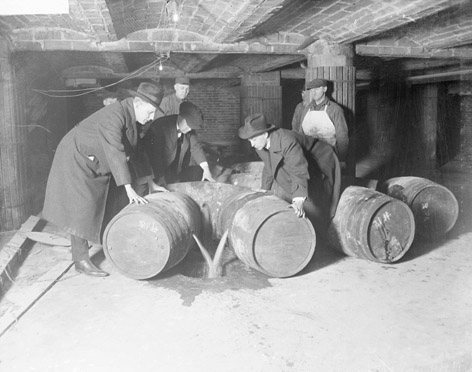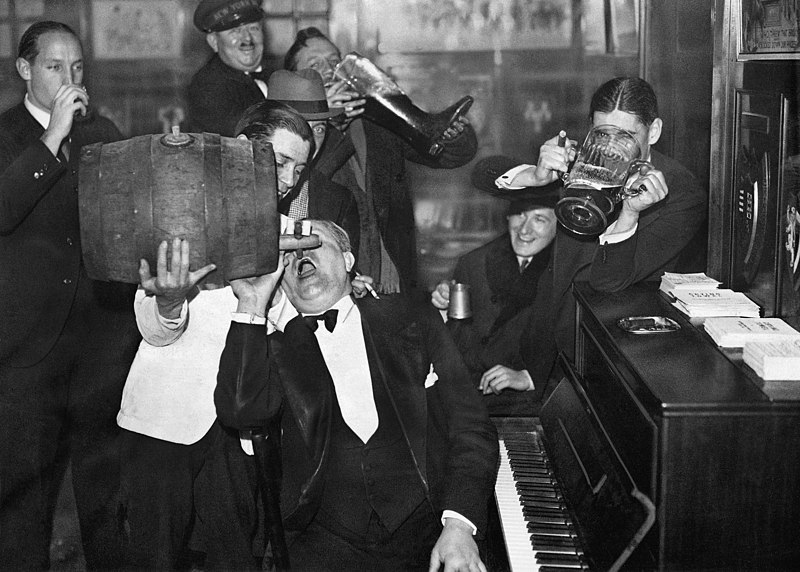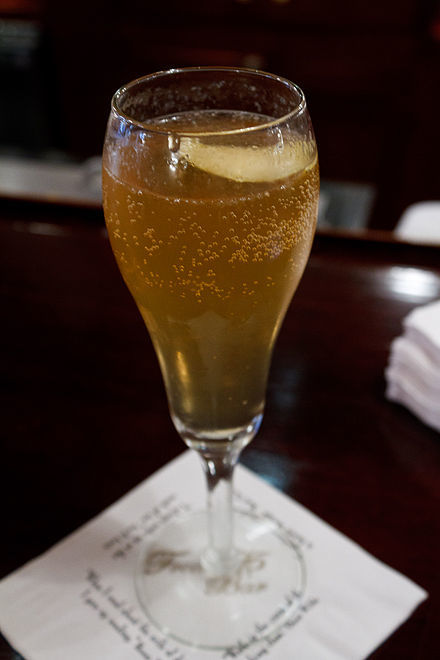Prohibition
1919 to 1940s
Until it wasn’t. American protestant fundamentalists, fueled by xenophobic attitudes and feeling like America was becoming “less American” due to European alcohol drinkers, moved to ban the production and consumption of alcohol in 1919. This caused a brain drain among America’s most talented mixologists. Many moved internationally to continue their craft or they changed profession altogether. America had built a reputation for crafting the finest cocktails and Europeans were eager to tap into this resource. Harry Craddock would return home to Britain due to Prohibition and bartend the American bar in the Savoy Hotel. While there, he would publish his Savoy Cocktail Book. This would help to further popularize cocktails globally. The name “American” bar is no coincidence. It is a mark of prestige for bartenders, having learned the craft around other prominent mixologists and where it had origins.
In an ironic twist of fate, the xenophobic attitudes that helped make prohibition possible were a large part of its undoing. Criminal organizations led by Europeans would rise and supply the still very high demand for alcohol in America. The average American that could get their hands on liquor found it to be of lower quality and often just drank it at home. Speakeasies became popular, although their reality is far from the popular fantasy. Most speakeasies, certainly the kind that the average American could access, were essentially a basement with spare furnishings. The bar itself might have just been wood atop spare barrels. Notably, it was in these speakeasies that men and women would drink together and break the law. Flapper dresses emerged and the speakeasy influenced American ideas of sex and gender.
Prohibition would become wildly unpopular in the late 1920s. Wealthy Americans would flaunt their power and drink in the open. Many circles feared that the American rule of law itself had been weakened because prohibition was so openly violated, leading to Americans feeling comfortable breaking other laws. Prohibition was eventually repealed in 1933, in part to help raise tax revenue due to the Great Depression. Due to bartenders leaving America in such great numbers and the Second World War, mixology could not effectively recover and remained in the shadows.
.
.
.
Drink: French 75
Representing the fun decadence and art deco culture of the roaring ‘20s, a cocktail like the French 75 would have only been available to the most wealthy of Americans. It is described by Harry Craddock in his Savoy Cocktail book. It was a favorite of American expatriates, including Great Gatsby author F. Scott Fitzgerald and Ernest Hemingway. They supposedly drank it together at Harry’s American Bar in Paris.
For an authentic prohibition experience more in line with what the average American would drink: find the cheapest vodka or whiskey you can find, whatever citrus or citrus you might have around your house, and then drink them together in your dark basement silently.
https://www.youtube.com/watch?v=g6jjDhuSj5o
Note: it is disputed whether the French 75 originally used brandy or gin as its main spirit. Thankfully, it's delicious both ways. I personally prefer brandy, but gin was much more available to Americans during prohibition.
In a shaker, squeeze 0.5oz of lemon juice
Add 0.5oz simple syrup
Add 1oz gin (or brandy)
Shake with ice
Stain ice chips out and pour the drink into a champagne glass
Top with champagne
Garnish with a lemon twist


